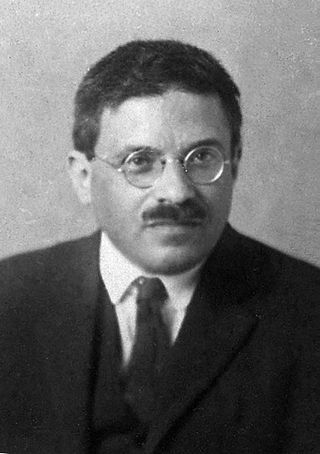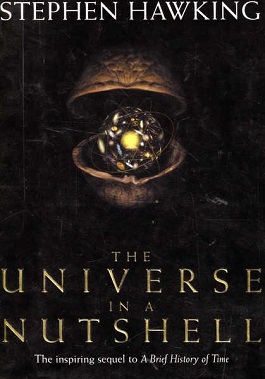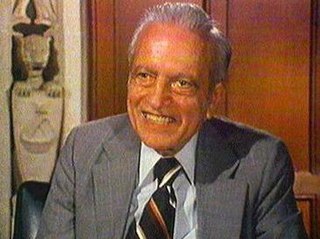
Albert Einstein was a German-born theoretical physicist who is widely held to be one of the greatest and most influential scientists of all time. Best known for developing the theory of relativity, Einstein also made important contributions to quantum mechanics, and was thus a central figure in the revolutionary reshaping of the scientific understanding of nature that modern physics accomplished in the first decades of the twentieth century. His mass–energy equivalence formula E = mc2, which arises from relativity theory, has been called "the world's most famous equation". He received the 1921 Nobel Prize in Physics "for his services to theoretical physics, and especially for his discovery of the law of the photoelectric effect", a pivotal step in the development of quantum theory. His work is also known for its influence on the philosophy of science. In a 1999 poll of 130 leading physicists worldwide by the British journal Physics World, Einstein was ranked the greatest physicist of all time. His intellectual achievements and originality have made the word Einstein broadly synonymous with genius.

In physics, gravity (from Latin gravitas 'weight') is a fundamental interaction which causes mutual attraction between all things that have mass. Gravity is, by far, the weakest of the four fundamental interactions, approximately 1038 times weaker than the strong interaction, 1036 times weaker than the electromagnetic force and 1029 times weaker than the weak interaction. As a result, it has no significant influence at the level of subatomic particles. However, gravity is the most significant interaction between objects at the macroscopic scale, and it determines the motion of planets, stars, galaxies, and even light.

Satyendra Nath Bose was an Indian mathematician and physicist specializing in theoretical physics. He is best known for his work on quantum mechanics in the early 1920s, in developing the foundation for Bose–Einstein statistics and the theory of the Bose–Einstein condensate. A Fellow of the Royal Society, he was awarded India's second highest civilian award, the Padma Vibhushan, in 1954 by the Government of India.

Paul Ehrenfest was an Austrian theoretical physicist, who made major contributions to the field of statistical mechanics and its relations with quantum mechanics, including the theory of phase transition and the Ehrenfest theorem. He befriended Albert Einstein on a visit to Prague in 1912 and became a professor in Leiden, where he frequently hosted Einstein. He died by murder-suicide in 1933; he killed his disabled son Wassik, and then himself.

John Stewart Bell FRS was a physicist from Northern Ireland and the originator of Bell's theorem, an important theorem in quantum physics regarding hidden-variable theories.
In theoretical physics, particularly in discussions of gravitation theories, Mach's principle is the name given by Albert Einstein to an imprecise hypothesis often credited to the physicist and philosopher Ernst Mach. The hypothesis attempted to explain how rotating objects, such as gyroscopes and spinning celestial bodies, maintain a frame of reference.

The Universe in a Nutshell is a 2001 book about theoretical physics by Stephen Hawking. It is generally considered a sequel and was created to update the public concerning developments since the multi-million-copy bestseller A Brief History of Time was published in 1988.

Leonard Susskind is an American theoretical physicist, Professor of theoretical physics in Stanford University and founding director of the Stanford Institute for Theoretical Physics. His research interests are string theory, quantum field theory, quantum statistical mechanics and quantum cosmology. He is a member of the US National Academy of Sciences, and the American Academy of Arts and Sciences, an associate member of the faculty of Canada's Perimeter Institute for Theoretical Physics, and a distinguished professor of the Korea Institute for Advanced Study.

Vladimir Aleksandrovich Fock was a Soviet physicist, who did foundational work on quantum mechanics and quantum electrodynamics.

Physics World is the membership magazine of the Institute of Physics, one of the largest physical societies in the world. It is an international monthly magazine covering all areas of physics, pure and applied, and is aimed at physicists in research, industry, physics outreach, and education worldwide.

Banesh Hoffmann was a British mathematician and physicist known for his association with Albert Einstein.

The Evolution of Physics: The Growth of Ideas from Early Concepts to Relativity and Quanta is a science book for the lay reader. Written by the physicists Albert Einstein and Leopold Infeld, it traces the development of ideas in physics. It was originally published in 1938 by Cambridge University Press. It was a popular success, and was featured in a Time cover story.
David I. Kaiser is an American physicist and historian of science. He is Germeshausen Professor of the History of Science at the Massachusetts Institute of Technology (MIT) and a full professor in MIT's department of physics. He also served as an inaugural associate dean for MIT's cross-disciplinary program in Social and Ethical Responsibilities of Computing.

The 4 Percent Universe: Dark Matter, Dark Energy, and the Race to Discover the Rest of Reality is a nonfiction book by writer and professor Richard Panek and published by Houghton Mifflin Harcourt on January 10, 2011.

The Thomson Medal and Prize is an award which has been made, originally only biennially in even-numbered years, since 2008 by the British Institute of Physics for "distinguished research in atomic or molecular physics". It is named after Nobel prizewinner Sir J. J. Thomson, the British physicist who demonstrated the existence of electrons, and comprises a silver medal and a prize of £1000.
Lionel R. Milgrom is a British chemist and homeopath who has been accused of being a proponent of pseudoscience. He is a former faculty member at Imperial College London, and a former senior lecturer in inorganic chemistry at Brunel University. He worked as a chemist with expertise in porphyrins for more than twenty years, after which he trained in homeopathy because he was impressed at how effective homeopathy appeared to be for treating his partner's pneumonia. Milgrom is also the founder of the company PhotoBiotics, a spinoff from Imperial College London, which pioneers a form of light-activated targeted cancer therapy. He has claimed that quantum entanglement explains how homeopathy works, a claim that has been criticized as "patent nonsense" by Chad Orzel. He has criticized those who criticize homeopathy as "new fundamentalists" and accused them of "demean[ing] science".
A hallmark of Albert Einstein's career was his use of visualized thought experiments as a fundamental tool for understanding physical issues and for elucidating his concepts to others. Einstein's thought experiments took diverse forms. In his youth, he mentally chased beams of light. For special relativity, he employed moving trains and flashes of lightning to explain his most penetrating insights. For general relativity, he considered a person falling off a roof, accelerating elevators, blind beetles crawling on curved surfaces and the like. In his debates with Niels Bohr on the nature of reality, he proposed imaginary devices intended to show, at least in concept, how the Heisenberg uncertainty principle might be evaded. In a profound contribution to the literature on quantum mechanics, Einstein considered two particles briefly interacting and then flying apart so that their states are correlated, anticipating the phenomenon known as quantum entanglement.
Adam Michael Becker is an American astrophysicist, author, and scientific philosopher. His works include the book What Is Real?, published by Basic Books, which explores the history and personalities surrounding the development and evolution of quantum physics, and includes a modern assessment of the Copenhagen Interpretation.

Subtle is the Lord: The Science and the Life of Albert Einstein is a biography of Albert Einstein written by Abraham Pais. First published in 1982 by Oxford University Press, the book is one of the most acclaimed biographies of the scientist. This was not the first popular biography of Einstein, but it was the first to focus on his scientific research as opposed to his life as a popular figure. Pais, renowned for his work in theoretical particle physics, was a friend of Einstein's at the Institute for Advanced Study in his early career. Originally published in English in the United States and the United Kingdom, the book has translations in over a dozen languages. Pais later released a sequel to the book in 1994 titled Einstein Lived Here and, after his death in 2000, the University Press released a posthumous reprint of the biography in 2005, with a new foreword by Roger Penrose. Considered very popular for a science book, the biography sold tens of thousands of copies of both paperback and hardcover versions in its first year. The book has received many reviews and, the year after its initial publication, it won both the 1983 National Book Award for Nonfiction, in Science (Hardcover), and the 1983 Science Writing Award.
The Heptapod languages are two constructed fictional languages used in Ted Chiang's short story, Story of Your Life, as well as its later film adaptation, Arrival. In-universe, they are used by the "heptapods", an alien race that makes contact with humanity.














